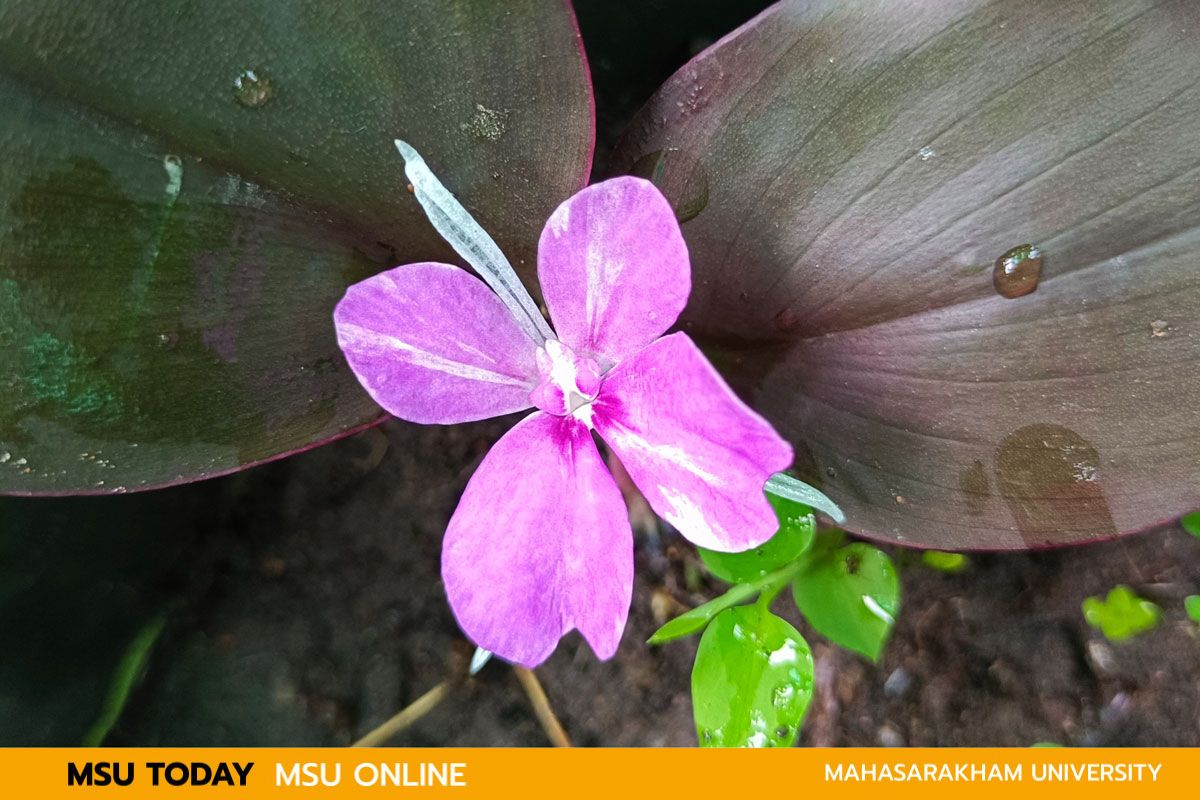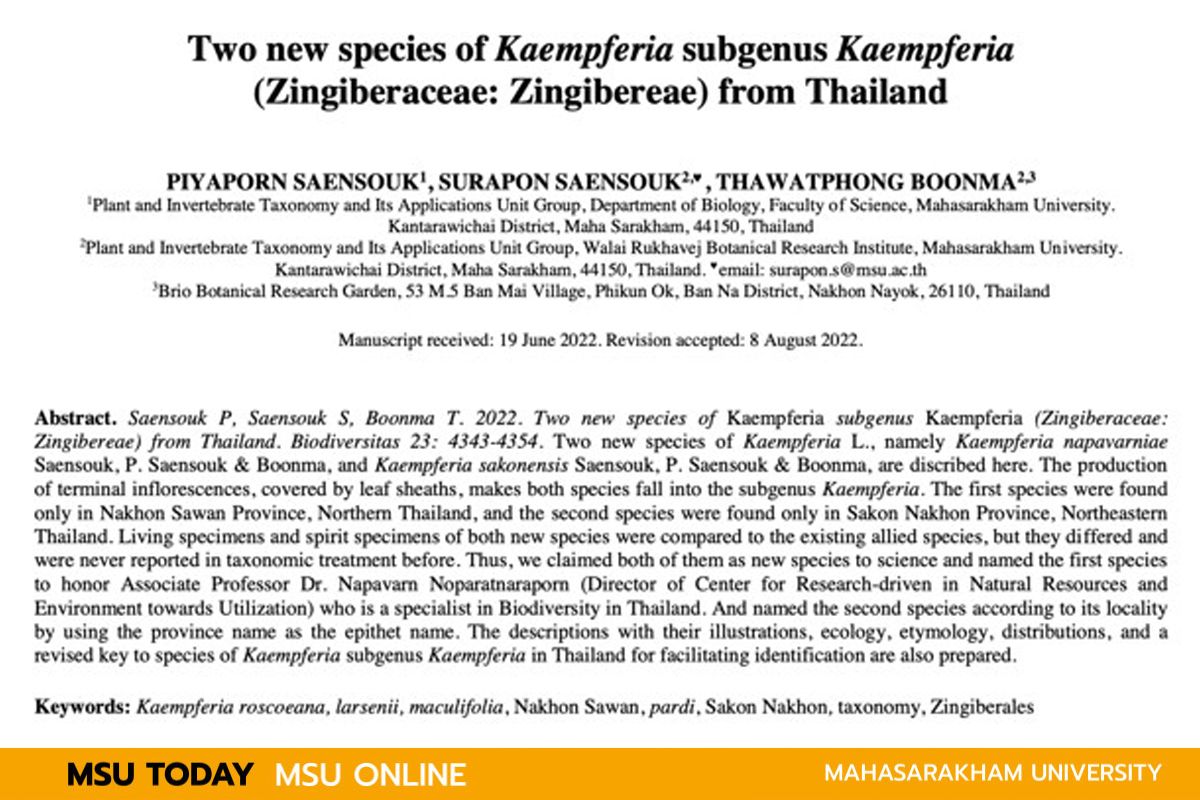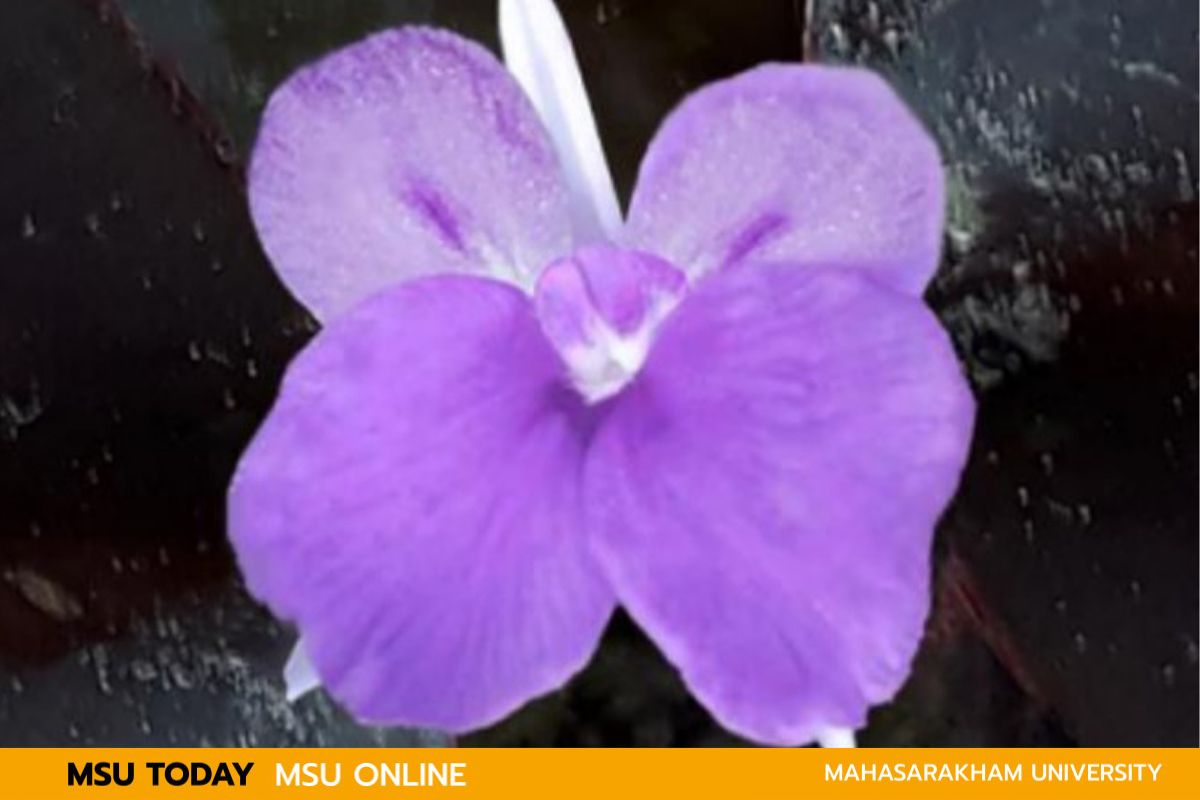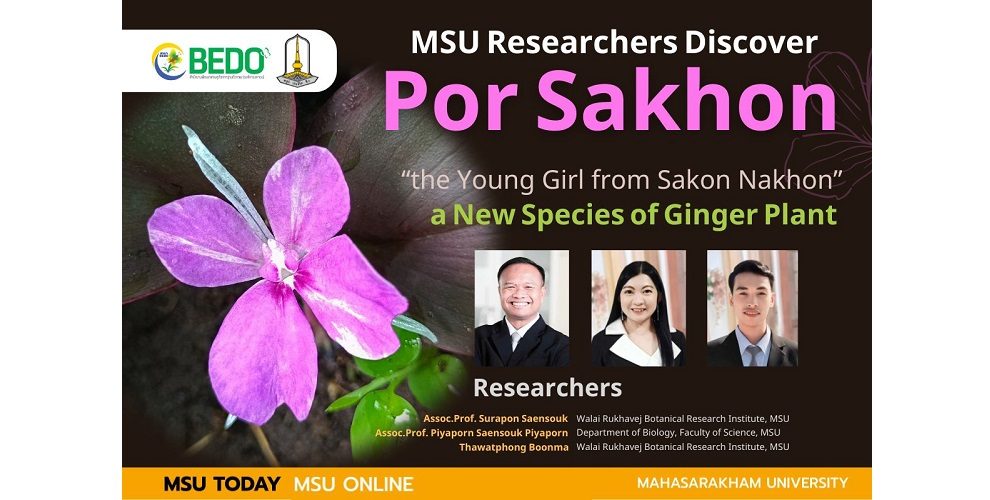MSU Researchers Discover Por Sakon or “the Young Girl from Sakon Nakhon” – a New Species of Ginger Plant
The discovery of a new species of ginger in the world has been ongoing thanks to researchers from Mahasarakham University (MSU), in a collaborative team, who discovered “Por Sakon,” also known as “the young girl from Sakon Nakhon.” The scientific name of this new species is Kaempferia sakonensis Saensouk, P. Saensouk & Boonma and is locally known as “Por Sakon” or “Wan Kai Kook.” It is one of the rarest plants in Thailand. In addition to being a new and beautiful species of ginger, the young leaves of Por Sakon can be eaten as a delicious food and have numerous medicinal properties as a herb, making it a globally significant new plant species.
Under the leadership of Assoc.Prof. Surapon Saensouk, Mr. Thawatphong Boonma (from the Biodiversity Program at the Walai Rukhavej Botanical Research Institute), and Assoc.Prof. Piyaporn Saensouk (from the Department of Biology, Faculty of Science), these three researchers are members of the Diversity of Family Zingiberaceae and Vascular Plants for their Applications research unit. The discovery of this new plant species is part of research funded by the public organization BEDO (Biodiversity-Based Economy Development Office), and has been published in an international journal. The research team possesses extensive knowledge and expertise in the field of biodiversity.
Origin of the Name “Por Sakon”
Scientific Naming: The scientific name was chosen based on the name of the province where the plant is naturally found, specifically in Akat Amnuai district, Sakon Nakhon province, in the northeastern region of Thailand. The plant is referred to as “Por Sakon” or “the young girl from Sakon Nakhon,” with the scientific name Kaempferia sakonensis Saensouk, sp. Nov. Its local names are “Por Sakon” or “Wan Kai Kook.”

Discovery of “Por Sakon,” a New Species of Ginger in the World
Por Sakon was discovered in Akat Amnuai district, Sakon Nakhon province. This discovery was a collaborative effort between a team of researchers from Mahasarakham University, a community enterprise, new-generation farmers in Tha Kon Subdistrict, Akat Amnuai District, Sakon Nakhon Province, and BEDO.
Characteristics of Por Sakon
The characteristics of Kaempferia sakonensis Saensouk, P. Saensouk & Boonma, which is still within the subgenus Kaempferia, include the production of flower spikes at the tips of the branches. This species produces erect pseudostems and has purple flowers, making it resemble Kaempferia larsenii Sirirugsa. However, it differs in the morphology of its stem and leaves.
Additionally, the flowers of this new species are similar to those of Kaempferia albomaculata Jenjitt. & K. Larsen (nom. nud.), but they can be easily distinguished as K. albomaculata has leaves that lie flat, whereas K. sakonensis has upright leaves and pseudostems.

Preferred Environment for “the Young Girl from Sakon Nakhon”
Por Sakon or “the young girl from Sakon Nakhon” prefers a hot and humid climate with moderate rainfall. It thrives in well-drained sandy loam soil in deciduous forests at elevations ranging from 200 to 400 meters above sea level.
Conservation Assessment by IUCN
Currently, Por Sakon has only been found in Akat Amnuai district, Sakon Nakhon province, although it is possible that it may be discovered in other nearby areas in the future. Therefore, the researchers propose classifying this plant as Data Deficient (DD) according to the IUCN criteria (IUCN, 2022). It is expected that further exploration will reveal a wider distribution of this species in nearby unexplored areas, leading to an updated and more appropriate conservation status in the future.
Blooming and Fruiting Period of “Por Sakon”
Por Sakon blooms from June to August. The flowers fully open in the early morning and last for only one day. The sprouting begins in late April, and the plant enters dormancy in early November.
Seed Dispersal of “Por Sakon”
Currently, the seed dispersal of Por Sakon is limited as it is an endemic plant found only in the area of Akat Amnuai district, Sakon Nakhon province, northeastern region of Thailand.

Benefits of “Por Sakon”
Por Sakon serves as a lucky charm plant. Its young leaves are edible and can be consumed fresh with chili paste. Moreover, the young leaves are used as ingredients in various aromatic soups such as frog soup, turtle soup, fish soup, and chicken soup to eliminate fishy smell and enhance aroma.
The development of Por Sakon or “the young girl from Sakon Nakhon” is significant because it is a small-sized plant with leaves that are red-green and beautiful purple flowers that give it a remarkable appearance. It should be highly valued for conservation and cultivation. It can be propagated using tissue culture techniques to ensure that this rare plant species is not lost and receives sustainable conservation. Researchers are currently working on expanding its propagation from rhizomes and tissue culture techniques to ensure the plant’s conservation and sustainable protection. Additionally, researchers aim to study its natural chemical constituents for herbal medicine production, breeding improvements for commercial purposes, and other future applications.
The knowledge gained from this research will be disseminated to communities, students, learners, and the general public to promote the long term conservation of various plant species.

Good research results stem from good planning, effort, diligence, patience, dedication, determination, and kindness towards colleagues, leading to a positive experience and strengthening the researchers.



Leave a Reply